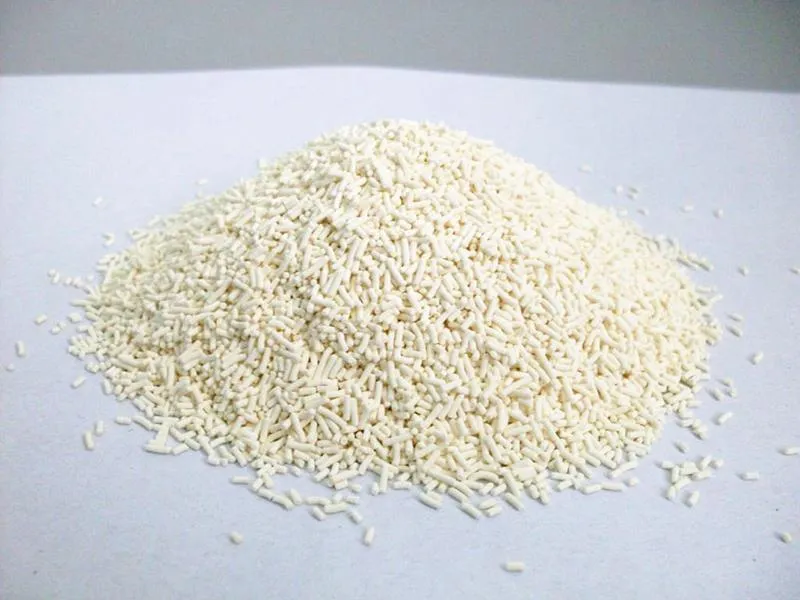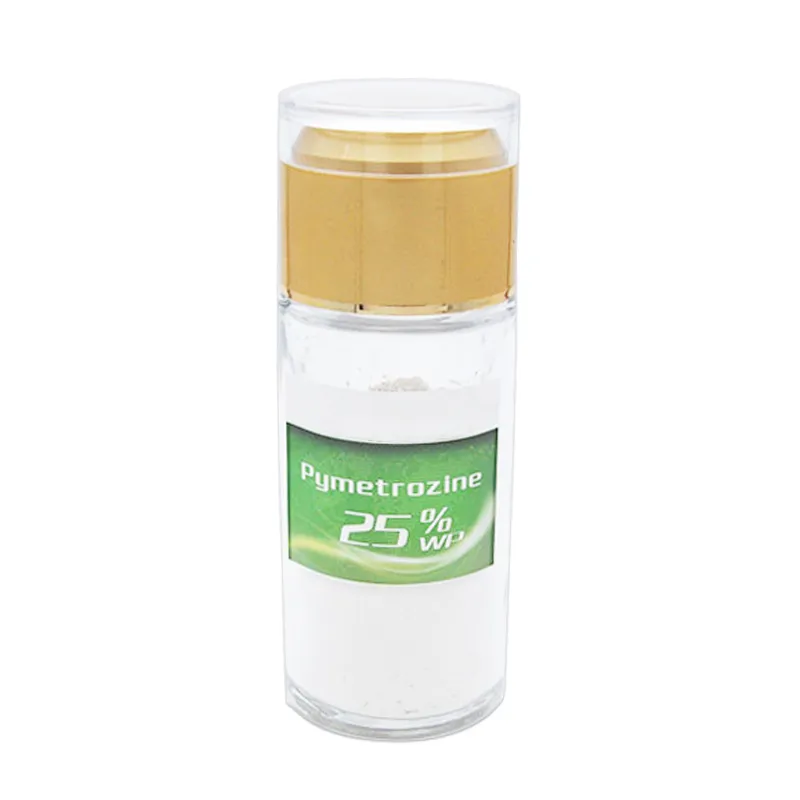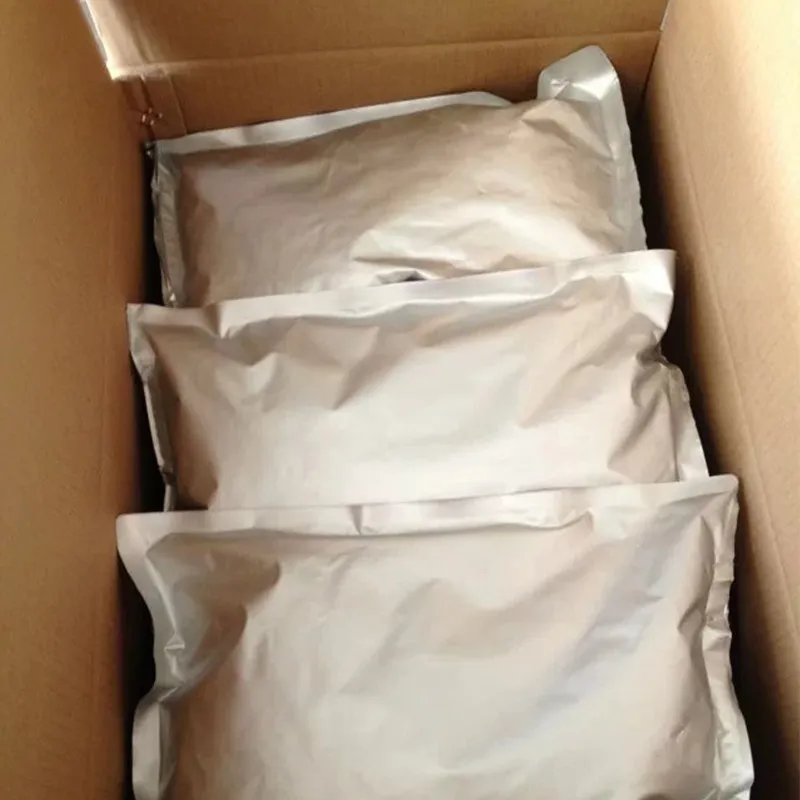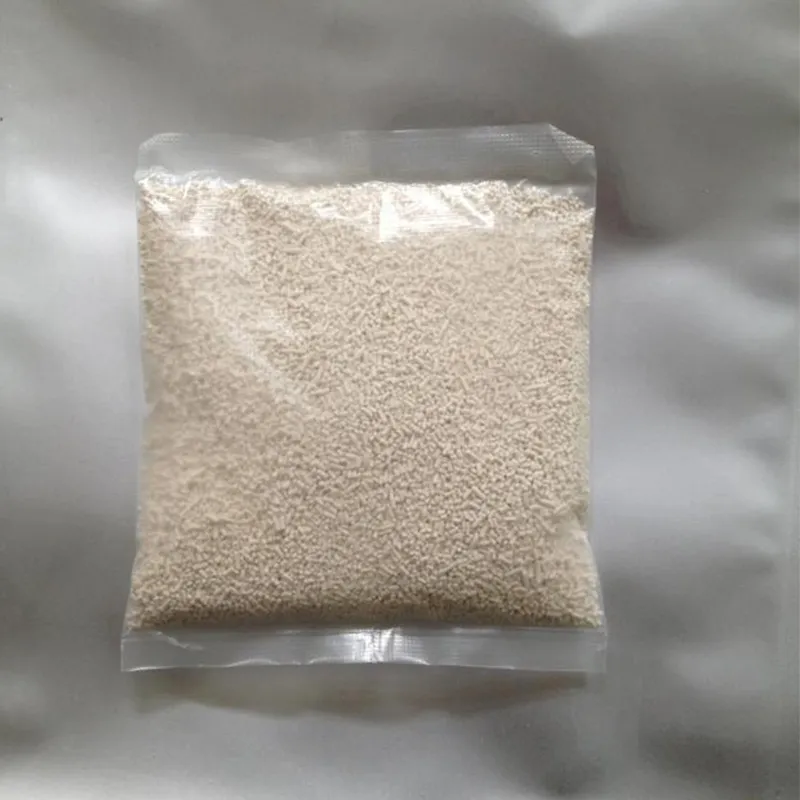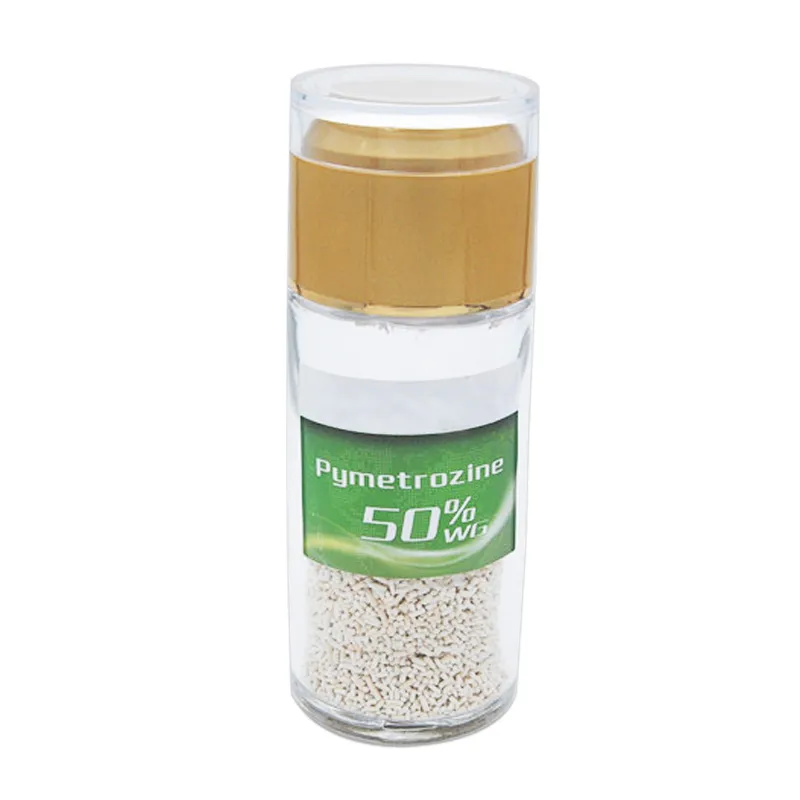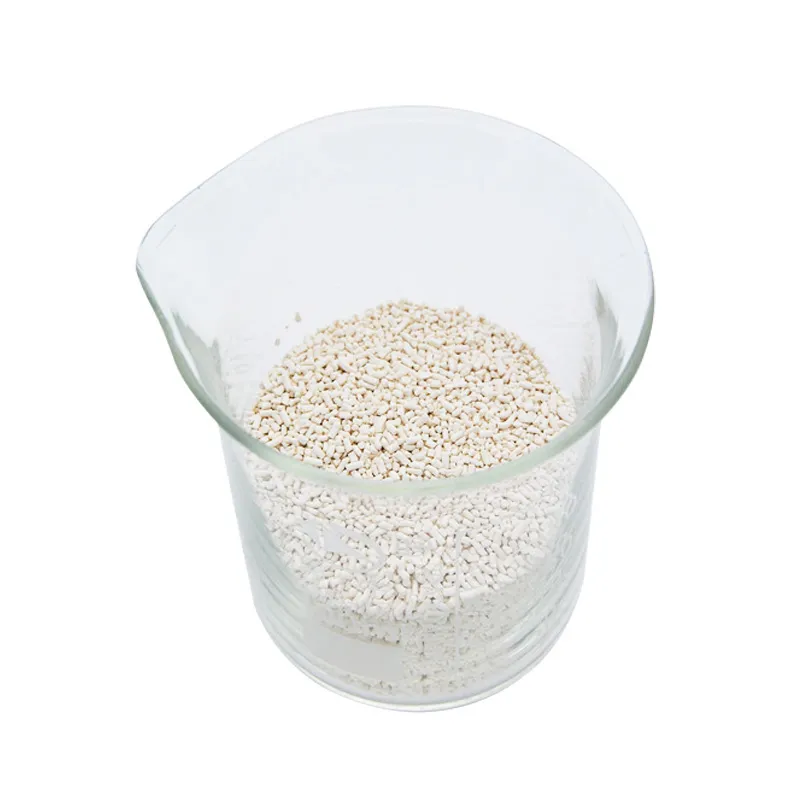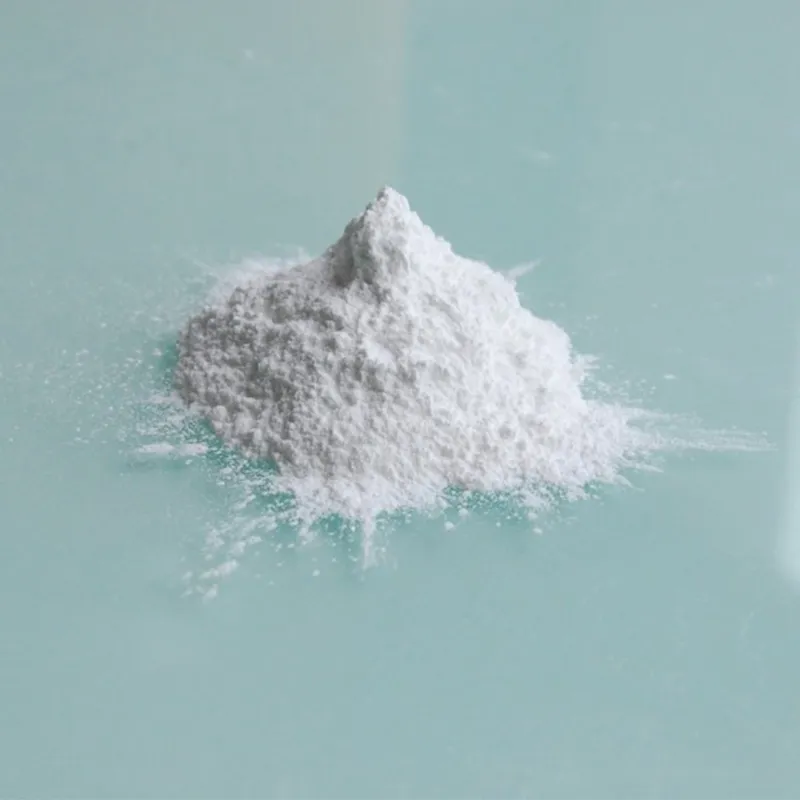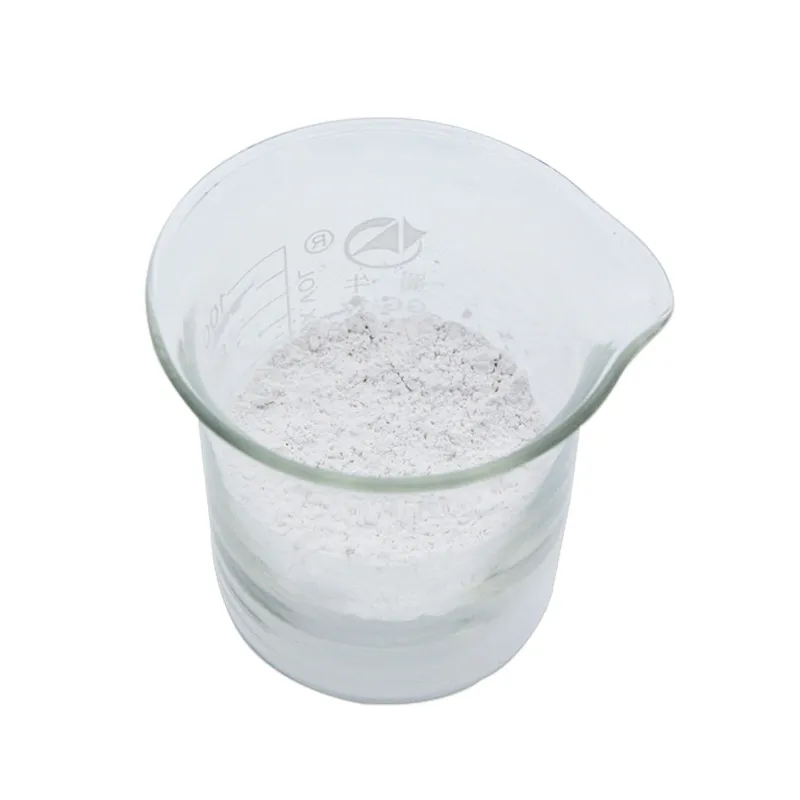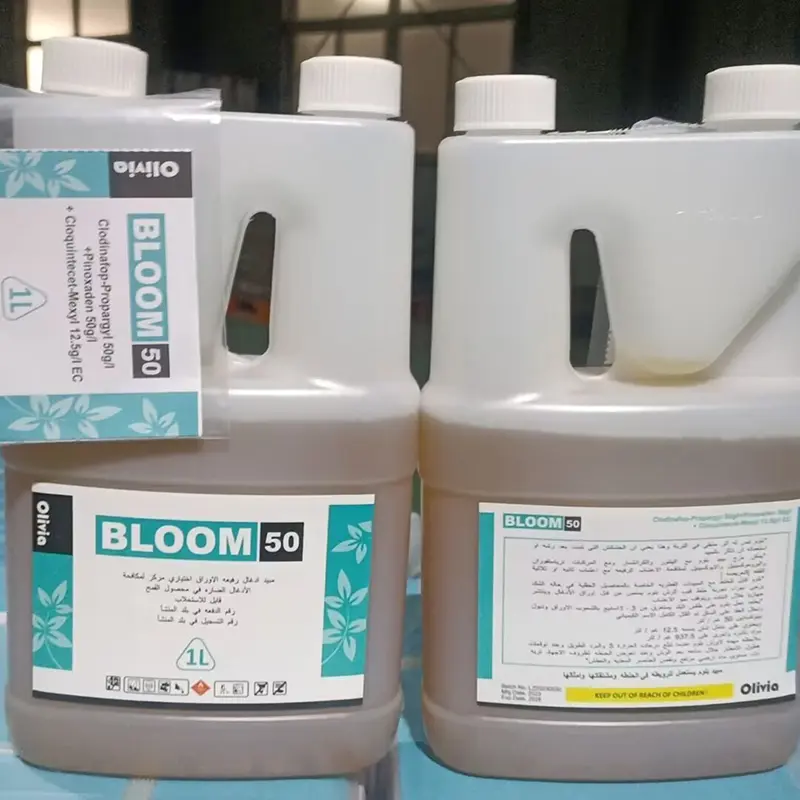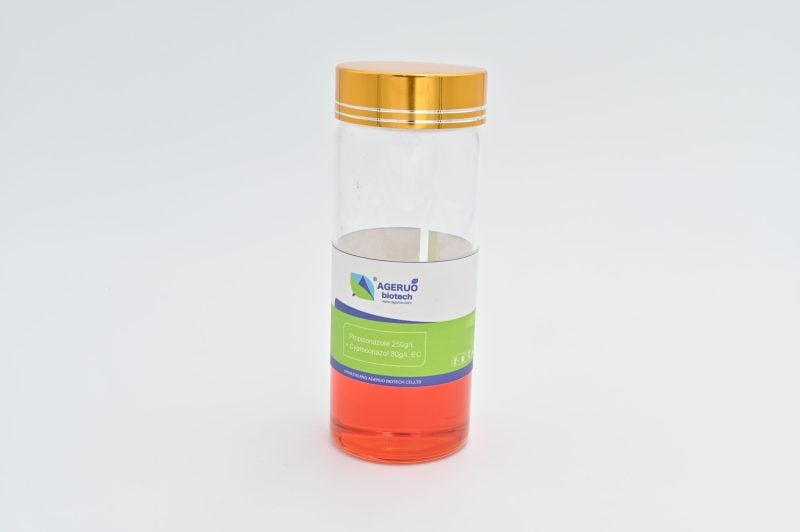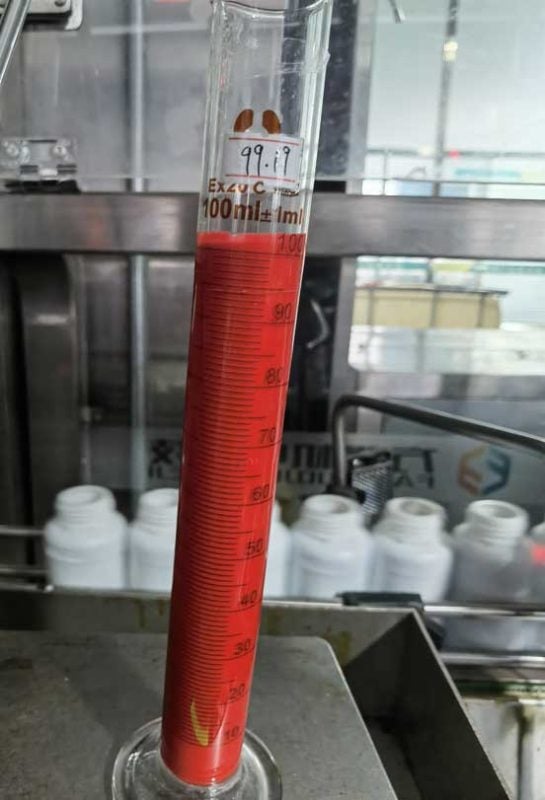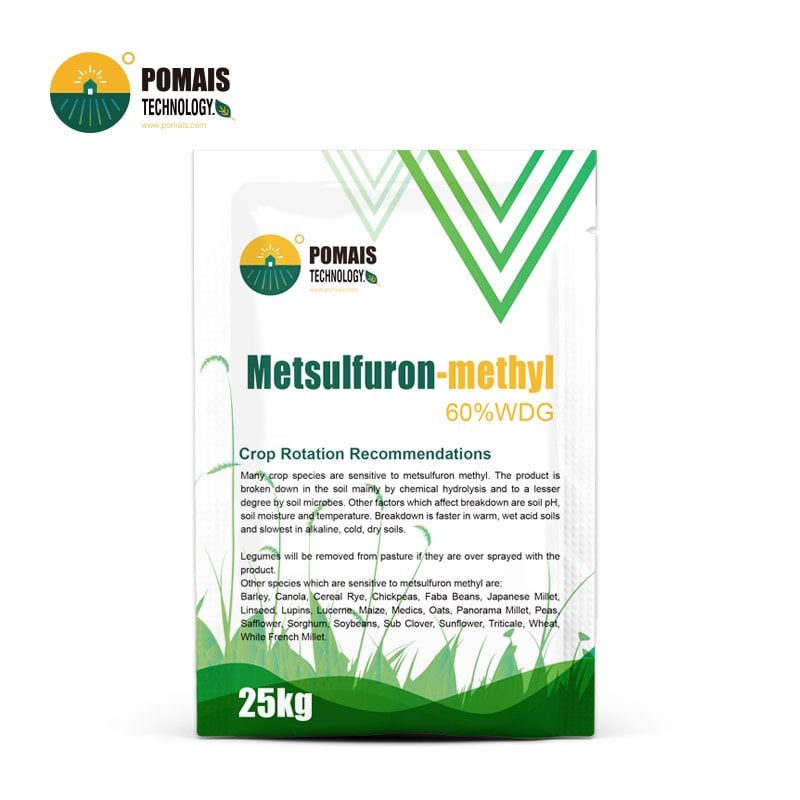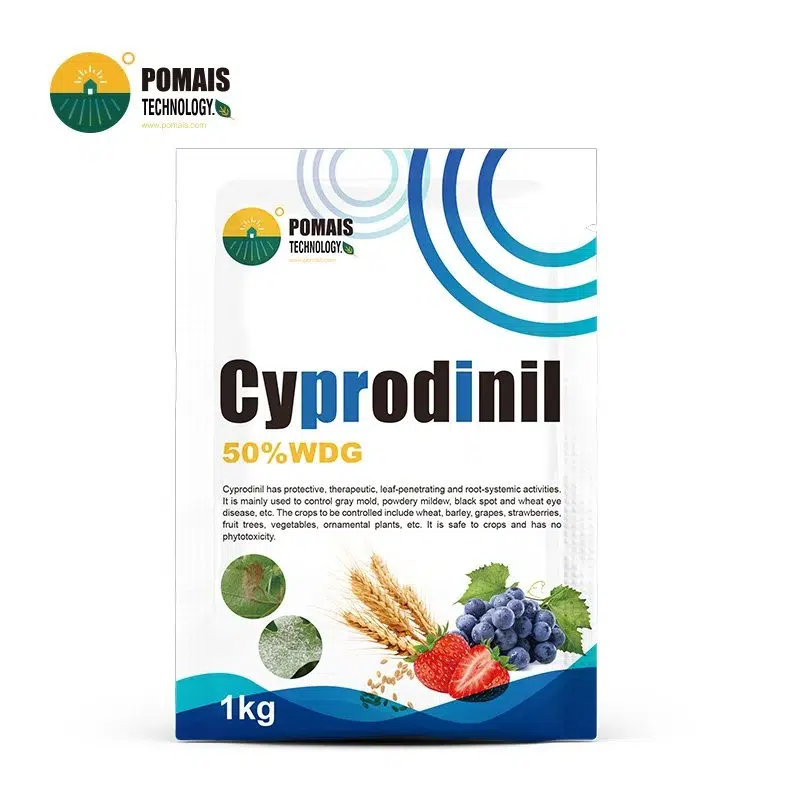Pymetrozine 50% WDG Insecticide
Systemic Insecticide for Whiteflies, Aphids, and Planthoppers
If you’re seeking a highly selective, non-lethal insecticide to protect crops from sap-sucking pests, Pymetrozine 50% WDG offers a scientifically advanced solution. As a pyridine-derived systemic insecticide, it targets the feeding behavior of aphids, whiteflies, leafhoppers, and planthoppers—causing them to stop feeding shortly after contact or ingestion, ultimately leading to starvation and death.
Unlike traditional neurotoxic insecticides, Pymetrozine 50 wg disrupts sensory communication in pests without immediate knockdown, making it safer for beneficial insects and pollinators when used correctly. Its water-dispersible granule (WDG) formulation allows for easy mixing, even spraying, and consistent performance in the field.
Ideal for rice, vegetables, cotton, fruit trees, and more, pymetrozine insecticide is widely used in resistance management programs and Integrated Pest Management (IPM) strategies. POMAIS offers flexible packaging, OEM labeling, and export documentation to help you bring this trusted agro chemical pymetrozine 50 wg product to your market with confidence.
- Designed for Professional Buyers & Bulk Orders
- This product is available for business purchase and large-scale distribution.
- We support custom packaging, labeling, and formulation to meet your market needs.
- Let’s build your brand together.

About Pymetrozine 50% WDG Insecticide
About Pymetrozine 50% WDG Insecticide
| Product Name | Pymetrozine 50% WDG |
| Formulation | Water Dispersible Granule (WDG) |
| Active Ingredient | Pymetrozine |
| Concentration | 50% |
| CAS Number | 123312-89-0 |
| Mode of Action | Feeding inhibitor targeting stylet/saliva activity of Homoptera |
| Target Pests | Aphids, Whiteflies, Planthoppers, Leafhoppers |
| Application Method | Foliar Spray |
| Recommended Dosage | 10–12 g/mu (150–180 g/ha) for rice; varies by crop |
| Formulation Type | Dust-free granule, high dispersibility |
| Shelf Life | 2 years |
| pH Range | 5.5–8.0 |
| Packaging Options | 50g–25kg (Foil, Kraft Bag, Sack, Drum) |
| OEM Service | Labeling, branding, language customization |
| Regulatory Support | MSDS, COA, TDS, label templates, registration dossier |
| Environmental Behavior | Low mammal/bird toxicity; selective; aquatic caution |
Pymetrozine 50% WDG
Pymetrozine 50% WDG is a new-generation insecticide developed to provide long-lasting control of piercing-sucking pests without harming beneficial insects or disrupting ecological balance. Unlike conventional insecticides that act through neurotoxicity or acute poisoning, pymetrozine interferes with the feeding mechanism of Homoptera pests, causing irreversible cessation of feeding and eventual death through starvation.
Its non-biocide mode of action makes it especially useful in rotation or combination with neonicotinoids or pyrethroids, helping to reduce resistance buildup in pests like:
- Brown planthopper, white-backed planthopper, and green leafhopper in rice
- Cabbage aphid, green peach aphid, and cotton aphid
- Whiteflies in sweet potato, vegetables, and greenhouse crops
The water-dispersible granule (WDG) format ensures high dispersibility, no dust, and easy handling for both manual and mechanized application systems. Pymetrozine 50 wg insecticide is particularly effective during early infestation stages, when pest populations are still localized and feeding actively.
At POMAIS, we supply multiple pymetrozine products including standalone formulations (25% WP, 50% WDG, 98% TC) and high-performance mixtures with thiamethoxam or indoxacarb. These combinations offer both contact and systemic activity, expanding the spectrum of control and improving field efficiency.
Mode of Action
Pymetrozine functions through a unique non-neurotoxic mechanism that specifically targets the feeding system of sap-sucking pests. After the insect comes into contact with or ingests the product, pymetrozine disrupts the stylet movement and salivary pumping behavior, effectively preventing the insect from feeding on plant phloem sap.
Rather than causing immediate knockdown, pymetrozine 50 wg induces a progressive feeding disorder. Affected pests quickly stop feeding—within minutes—resulting in gradual starvation and death within 2–3 days. This mode of action is:
- Highly selective to Homoptera pests (aphids, whiteflies, planthoppers, leafhoppers)
- Safe for predatory and pollinating insects when applied according to label instructions
- Effective against resistant pest populations, particularly where organophosphates or neonicotinoids have lost efficacy
Its systemic activity allows pymetrozine to be absorbed by plant tissues and translocated to new growth areas, ensuring full-plant protection over time. It also exhibits translaminar movement, making it effective even when complete spray coverage is difficult.
This innovative approach makes pymetrozine insecticide a critical component in Integrated Pest Management (IPM) programs, resistance rotation strategies, and ecological crop protection models.
Target Pests & Application Areas
Pymetrozine 50% WDG is specially designed to control piercing-sucking pests that damage crops by feeding on plant sap and transmitting viral diseases. It is highly effective against both nymphs and adults of Homoptera species, making it a valuable tool in preventive and early-stage pest control programs.
This insecticide is particularly suited for:
- Rice fields facing pressure from brown planthopper, white-backed planthopper, or green leafhopper
- Vegetable crops affected by aphids and whiteflies in open field and greenhouse systems
- Cotton and fruit trees where aphid and leafhopper outbreaks impact both yield and quality
- Ornamentals and field crops requiring selective protection without harming beneficial species
Common Target Pests:
| Pest Group | Examples | Crops Affected |
|---|---|---|
| Aphididae | Cotton aphid, green peach aphid | Cotton, vegetables, fruit trees |
| Whiteflies | Sweet potato whitefly, greenhouse whitefly | Vegetables, ornamental plants |
| Leafhoppers | Green rice leafhopper, jassids | Rice, cotton, legumes |
| Planthoppers | Brown planthopper, white-backed planthopper | Rice |
Pymetrozine is known for its strong performance on gray planthopper and brown planthopper in rice, and is often recommended in rotations with other agro chemicals to extend field-level protection and manage resistance.
Application Methods & Dosage
Pymetrozine 50% WDG is typically applied as a foliar spray, targeting early pest populations before they reach economic damage thresholds. It is important to apply evenly and ensure full coverage of target feeding zones, especially on the underside of leaves where pests often concentrate.
The following table provides general guidance for key crops and pest targets:
| Formulation | Crop | Target Pest | Recommended Dosage | Application Method |
|---|---|---|---|---|
| Pymetrozine 50% WDG | Rice | Brown/whiteback planthopper | 10–12 g/mu (150–180 g/ha) | Foliar spray |
| Pymetrozine 25% WP | Wheat, cotton, vegetables | Aphids, leafhoppers | 20–25 g/mu (300–375 g/ha) | Foliar spray |
| Pymetrozine 50% WP | Ornamental chrysanthemum | Aphids | 2000–3000 times dilution | Foliar spray |
| Pymetrozine 70% WDG | Fruit trees | Whiteflies, leafhoppers | 6–10 g/mu (90–150 g/ha) | Foliar spray |
Best Practice Tips:
- Apply at the early stage of pest appearance for best results.
- Avoid spraying before heavy rain; ensure at least 4 hours of rainfastness.
- Maintain water pH between 5.5 and 7.0 during mixing.
- Rotate with other insecticides such as neonicotinoids or diamides to manage resistance.
Application frequency may vary depending on pest pressure and crop growth stage. For rice, split applications at panicle initiation and post-heading are recommended for consistent planthopper control.
Formulation Stability & Packaging Options
Pymetrozine 50% WDG is engineered for stability, ease of handling, and excellent dispersibility. As a water-dispersible granule, it offers superior storage performance compared to older WP or EC formulations, while also providing a dust-free, easy-to-measure user experience in the field.
Formulation Stability Features:
- Shelf Life: Minimum 2 years under standard dry, sealed storage conditions
- Physical Stability: No caking, agglomeration, or moisture absorption in humid environments
- Dispersibility: Fully dissolves in water with minimal agitation; compatible with most commercial sprayers
- pH Range: Maintains chemical stability in spray tank water with pH between 5.5–8.0
Pymetrozine is also available in other formulations including:
- 25% WP – light yellow powder, suitable for smallholder use
- 70% WDG – higher concentration for low-dose, high-efficiency use
- 98% TC – technical concentrate for formulators and large-scale manufacturers
Available Packaging Options:
| Net Weight | Container Type | Market Purpose |
|---|---|---|
| 50 g – 500 g | Foil pouches or sachets | Retail and farmer distribution |
| 1 kg – 5 kg | Inner-lined kraft bags | Agro-dealer or bulk sale use |
| 10 kg – 25 kg | Laminated woven sacks | Wholesale and repackaging |
| Bulk (25–200 kg) | Fiber drum or carton box | For distributors or processors |
All packaging can be fully customized to include:
- Multilingual labeling
- Your brand name and logo
- Barcode and QR traceability
- Moisture barrier layers and export-standard sealing
POMAIS ensures packaging quality meets international shipping standards and storage safety for tropical, subtropical, or temperate market conditions.
Tank Mix Compatibility & Safety Precautions
Pymetrozine 50% WDG is compatible with a wide range of commonly used insecticides, fungicides, and foliar fertilizers, making it highly suitable for tank-mix applications in integrated pest management programs. However, as with all agrochemicals, small-scale compatibility testing is strongly recommended before field-wide use.
Tank Mix Compatibility:
- Compatible with systemic insecticides such as thiamethoxam, acetamiprid, and indoxacarb
- Can be mixed with fungicides for combined pest and disease control
- Physically stable in water-based mixtures under standard spray conditions
Avoid Mixing With:
- Strong alkaline solutions (pH > 9) that may affect formulation stability
- Oil-based emulsifiable concentrates (ECs) without prior compatibility checks
- High-sulfur or copper-based products unless proven compatible
Application Safety Guidelines:
- Wear protective gloves, clothing, and goggles during mixing and spraying
- Ensure even spray coverage, especially on the underside of leaves and pest-prone zones
- Avoid inhalation of dust or spray mist
- Do not apply during strong wind or immediately before heavy rainfall
- Observe pre-harvest intervals (PHI) and re-entry intervals (REI) as per crop and label recommendations
- Prevent contamination of nearby water bodies; the product is toxic to aquatic organisms
Special note for rice application: Similar to profenofos, improper use of pymetrozine on rice (e.g., excessive dose or incorrect timing) may lead to grain odor issues. Follow label timing carefully—typically applied at panicle initiation and post-heading stages.
Regulatory Compliance & Environmental Behavior
Pymetrozine 50% WDG is manufactured and documented in full compliance with international agrochemical safety, labeling, and environmental standards, enabling smooth registration and reliable importation into both developed and emerging agricultural markets.
Regulatory Support & Documentation:
- Conforms to GHS (Globally Harmonized System) labeling standards with full hazard classification
- Documentation available includes:
- MSDS (Material Safety Data Sheet)
- COA (Certificate of Analysis)
- TDS (Technical Data Sheet)
- Product label templates in English, Spanish, French, Russian, Arabic, and others
- Registration support provided for ICAMA, REACH, SADC, ECOWAS, and national authorities in Asia, Africa, and Latin America
- Production facilities are ISO 9001 certified, with batch-wise QC records and traceability
Environmental Behavior:
- Low toxicity to mammals, birds, and earthworms when used as directed
- Selective insecticidal action reduces impact on pollinators and beneficial predators
- Low persistence in soil and water; degrades into non-harmful byproducts over time
- Non-phytotoxic to labeled crops under recommended usage
- Toxic to aquatic organisms—care must be taken to avoid runoff into water bodies
- No negative residue concerns for rotational crops when proper application intervals are observed
These characteristics make pymetrozine 50 wg a preferred choice in regions with rising ecological standards and regulatory oversight. Its profile supports both sustainable agriculture and product stewardship objectives for importers and distributors.
OEM Services & Market Support
At POMAIS, we do more than supply high-performance agrochemicals — we empower your brand through a complete set of OEM, labeling, registration, and logistics services tailored to your market.
Whether you’re building your own line of pymetrozine products or expanding an existing portfolio, our manufacturing and service systems are designed for efficiency, compliance, and customization.
OEM & Branding Services:
- Private label support for pymetrozine 50% WDG, 25% WP, and mixed formulations
- Flexible packaging options from 50 g foil pouches to 25 kg woven bags
- Multilingual labeling and custom branding for regional regulatory compliance
- Barcode, lot code, and traceability systems for distributor and retail management
Technical & Regulatory Support:
- Full documentation: MSDS, COA, TDS, label template, GLP test references
- Support for dossier preparation in target markets (Asia, Middle East, Africa, South America)
- Sample formulation support and product registration assistance
Production & Delivery Workflow:
- Label and packaging confirmation: 3 working days
- Custom packaging and raw material preparation: 10–15 working days
- Finished formulation, filling, and QA release: 5–7 working days
- Inland transport to port and customs processing: 3–5 working days
We support both small-batch trial orders and bulk commercial shipments, giving you the flexibility to enter new markets or strengthen existing ones.
As a professional pymetrozine 50 wg manufacturer, POMAIS combines precise formulation technology with export experience to help you deliver trusted, compliant, and high-impact crop protection solutions to your customers.
Field Use Scenarios
In large-scale rice production regions, Pymetrozine 50% WDG is widely applied during the critical stages of panicle initiation and post-heading to manage brown planthopper outbreaks. Farmers have reported excellent field persistence and reduced virus transmission when applied at 10–12 g/mu, especially under moderate humidity conditions. By inhibiting feeding rather than causing direct knockdown, pymetrozine allows the rice plant to recover and complete grain filling, protecting both yield and quality.
In vegetable production systems—especially in greenhouse tomatoes, eggplants, and leafy greens—this formulation is used as part of an early warning pest program to prevent the buildup of aphid and whitefly populations. When applied at the early nymph stage, pymetrozine provides 7–10 days of residual activity, with minimal impact on pollinators and beneficial insects inside the protected environment.
Cotton and orchard growers use pymetrozine-based mixtures to control mixed aphid and jassid infestations during early flowering. Its systemic movement ensures that even new leaf flushes are protected from feeding damage. Compared with faster-acting neonicotinoids, pymetrozine is often selected for targeted IPM use where pest pressure is continuous but not yet severe.
Thanks to its non-neurotoxic action and long-lasting selectivity, pymetrozine has become a reliable component in rotation programs across multiple cropping systems where ecological protection and residue safety are important priorities.
FAQ – Common Questions
Q1: What pests does Pymetrozine 50% WDG effectively control?
A1: Pymetrozine is designed for the control of piercing-sucking insects such as aphids, whiteflies, leafhoppers, and planthoppers, including resistant strains. It is widely used in rice, vegetables, cotton, fruit trees, and ornamental crops.
Q2: How does Pymetrozine differ from conventional insecticides?
A2: Unlike neurotoxic insecticides, pymetrozine inhibits feeding behavior rather than killing through poisoning. This makes it highly selective, safer for beneficial insects, and ideal for use in IPM and resistance management programs.
Q3: Can Pymetrozine 50% WDG be mixed with other agrochemicals?
A3: Yes, it is compatible with many insecticides and fungicides. However, it should not be mixed with strong alkaline solutions or copper-based products. Always conduct a jar test before large-scale tank mixing.
Q4: What packaging options are available for private labeling?
A4: We offer OEM packaging from 50 g foil pouches to 25 kg woven bags, with multilingual labeling, custom artwork, and barcode traceability to meet your brand and regulatory requirements.
Q5: What is the typical lead time for customized orders?
A5: From artwork confirmation to port shipment, the full production and delivery cycle usually takes 20–25 working days. Samples and registration documents can be provided in advance.
Q6: Is pymetrozine safe for use near pollinators or aquatic areas?
A6: When used as directed, pymetrozine has low impact on bees and predators. However, it is toxic to fish, so care must be taken to avoid water source contamination during application or disposal.
Q7: What is the pymetrozine price per kg?
A7: Pricing depends on formulation, order volume, and packaging specifications. Please contact us directly for a customized quotation based on your market and application needs.
Why Choose POMAIS & Partner with Us
At POMAIS, we understand that your reputation depends on the performance, consistency, and reliability of the products you distribute. As a trusted pymetrozine 50% WDG manufacturer, we combine technical expertise, advanced production capabilities, and responsive service to help you build a stronger product line and brand presence in your market.
What sets us apart:
- Full Control Over Formulations
We manufacture a wide range of pymetrozine products including 25% WP, 50% WDG, 70% WDG, and 98% TC, as well as multiple co-formulations. Whether you require strict moisture stability or fine granule dispersibility, we tailor each batch to your exact specifications. - OEM & Registration Support
From custom packaging with multilingual labels to full documentation packs (MSDS, COA, TDS, SDS, ICP, samples), we help you accelerate product registration and brand launch in your local market. - Export-Ready Compliance
All our facilities meet ISO9001:2015 and follow WHMIS/GHS protocols for global chemical safety standards. Shipments are available with SGS or BV inspection upon request to ensure import clearance. - Responsive Global Service
Our sales and technical teams are fluent in agrochemical regulations and trade practices across Central Asia, Africa, the Middle East, and South America. We assist with shipping, labeling, and even local language adaptation.
When you partner with POMAIS, you’re not just buying pymetrozine—you’re gaining a strategic partner who helps you win in competitive markets through superior quality, regulatory ease, and responsive collaboration.
Let’s build a long-term partnership. Request your quotation or free sample today.
| Product Name | Pymetrozine 50% WDG |
| Formulation | Water Dispersible Granule (WDG) |
| Active Ingredient | Pymetrozine |
| Concentration | 50% |
| CAS Number | 123312-89-0 |
| Mode of Action | Feeding inhibitor targeting stylet/saliva activity of Homoptera |
| Target Pests | Aphids, Whiteflies, Planthoppers, Leafhoppers |
| Application Method | Foliar Spray |
| Recommended Dosage | 10–12 g/mu (150–180 g/ha) for rice; varies by crop |
| Formulation Type | Dust-free granule, high dispersibility |
| Shelf Life | 2 years |
| pH Range | 5.5–8.0 |
| Packaging Options | 50g–25kg (Foil, Kraft Bag, Sack, Drum) |
| OEM Service | Labeling, branding, language customization |
| Regulatory Support | MSDS, COA, TDS, label templates, registration dossier |
| Environmental Behavior | Low mammal/bird toxicity; selective; aquatic caution |
Pymetrozine 50% WDG
Pymetrozine 50% WDG is a new-generation insecticide developed to provide long-lasting control of piercing-sucking pests without harming beneficial insects or disrupting ecological balance. Unlike conventional insecticides that act through neurotoxicity or acute poisoning, pymetrozine interferes with the feeding mechanism of Homoptera pests, causing irreversible cessation of feeding and eventual death through starvation.
Its non-biocide mode of action makes it especially useful in rotation or combination with neonicotinoids or pyrethroids, helping to reduce resistance buildup in pests like:
- Brown planthopper, white-backed planthopper, and green leafhopper in rice
- Cabbage aphid, green peach aphid, and cotton aphid
- Whiteflies in sweet potato, vegetables, and greenhouse crops
The water-dispersible granule (WDG) format ensures high dispersibility, no dust, and easy handling for both manual and mechanized application systems. Pymetrozine 50 wg insecticide is particularly effective during early infestation stages, when pest populations are still localized and feeding actively.
At POMAIS, we supply multiple pymetrozine products including standalone formulations (25% WP, 50% WDG, 98% TC) and high-performance mixtures with thiamethoxam or indoxacarb. These combinations offer both contact and systemic activity, expanding the spectrum of control and improving field efficiency.
Mode of Action
Pymetrozine functions through a unique non-neurotoxic mechanism that specifically targets the feeding system of sap-sucking pests. After the insect comes into contact with or ingests the product, pymetrozine disrupts the stylet movement and salivary pumping behavior, effectively preventing the insect from feeding on plant phloem sap.
Rather than causing immediate knockdown, pymetrozine 50 wg induces a progressive feeding disorder. Affected pests quickly stop feeding—within minutes—resulting in gradual starvation and death within 2–3 days. This mode of action is:
- Highly selective to Homoptera pests (aphids, whiteflies, planthoppers, leafhoppers)
- Safe for predatory and pollinating insects when applied according to label instructions
- Effective against resistant pest populations, particularly where organophosphates or neonicotinoids have lost efficacy
Its systemic activity allows pymetrozine to be absorbed by plant tissues and translocated to new growth areas, ensuring full-plant protection over time. It also exhibits translaminar movement, making it effective even when complete spray coverage is difficult.
This innovative approach makes pymetrozine insecticide a critical component in Integrated Pest Management (IPM) programs, resistance rotation strategies, and ecological crop protection models.
Target Pests & Application Areas
Pymetrozine 50% WDG is specially designed to control piercing-sucking pests that damage crops by feeding on plant sap and transmitting viral diseases. It is highly effective against both nymphs and adults of Homoptera species, making it a valuable tool in preventive and early-stage pest control programs.
This insecticide is particularly suited for:
- Rice fields facing pressure from brown planthopper, white-backed planthopper, or green leafhopper
- Vegetable crops affected by aphids and whiteflies in open field and greenhouse systems
- Cotton and fruit trees where aphid and leafhopper outbreaks impact both yield and quality
- Ornamentals and field crops requiring selective protection without harming beneficial species
Common Target Pests:
| Pest Group | Examples | Crops Affected |
|---|---|---|
| Aphididae | Cotton aphid, green peach aphid | Cotton, vegetables, fruit trees |
| Whiteflies | Sweet potato whitefly, greenhouse whitefly | Vegetables, ornamental plants |
| Leafhoppers | Green rice leafhopper, jassids | Rice, cotton, legumes |
| Planthoppers | Brown planthopper, white-backed planthopper | Rice |
Pymetrozine is known for its strong performance on gray planthopper and brown planthopper in rice, and is often recommended in rotations with other agro chemicals to extend field-level protection and manage resistance.
Application Methods & Dosage
Pymetrozine 50% WDG is typically applied as a foliar spray, targeting early pest populations before they reach economic damage thresholds. It is important to apply evenly and ensure full coverage of target feeding zones, especially on the underside of leaves where pests often concentrate.
The following table provides general guidance for key crops and pest targets:
| Formulation | Crop | Target Pest | Recommended Dosage | Application Method |
|---|---|---|---|---|
| Pymetrozine 50% WDG | Rice | Brown/whiteback planthopper | 10–12 g/mu (150–180 g/ha) | Foliar spray |
| Pymetrozine 25% WP | Wheat, cotton, vegetables | Aphids, leafhoppers | 20–25 g/mu (300–375 g/ha) | Foliar spray |
| Pymetrozine 50% WP | Ornamental chrysanthemum | Aphids | 2000–3000 times dilution | Foliar spray |
| Pymetrozine 70% WDG | Fruit trees | Whiteflies, leafhoppers | 6–10 g/mu (90–150 g/ha) | Foliar spray |
Best Practice Tips:
- Apply at the early stage of pest appearance for best results.
- Avoid spraying before heavy rain; ensure at least 4 hours of rainfastness.
- Maintain water pH between 5.5 and 7.0 during mixing.
- Rotate with other insecticides such as neonicotinoids or diamides to manage resistance.
Application frequency may vary depending on pest pressure and crop growth stage. For rice, split applications at panicle initiation and post-heading are recommended for consistent planthopper control.
Formulation Stability & Packaging Options
Pymetrozine 50% WDG is engineered for stability, ease of handling, and excellent dispersibility. As a water-dispersible granule, it offers superior storage performance compared to older WP or EC formulations, while also providing a dust-free, easy-to-measure user experience in the field.
Formulation Stability Features:
- Shelf Life: Minimum 2 years under standard dry, sealed storage conditions
- Physical Stability: No caking, agglomeration, or moisture absorption in humid environments
- Dispersibility: Fully dissolves in water with minimal agitation; compatible with most commercial sprayers
- pH Range: Maintains chemical stability in spray tank water with pH between 5.5–8.0
Pymetrozine is also available in other formulations including:
- 25% WP – light yellow powder, suitable for smallholder use
- 70% WDG – higher concentration for low-dose, high-efficiency use
- 98% TC – technical concentrate for formulators and large-scale manufacturers
Available Packaging Options:
| Net Weight | Container Type | Market Purpose |
|---|---|---|
| 50 g – 500 g | Foil pouches or sachets | Retail and farmer distribution |
| 1 kg – 5 kg | Inner-lined kraft bags | Agro-dealer or bulk sale use |
| 10 kg – 25 kg | Laminated woven sacks | Wholesale and repackaging |
| Bulk (25–200 kg) | Fiber drum or carton box | For distributors or processors |
All packaging can be fully customized to include:
- Multilingual labeling
- Your brand name and logo
- Barcode and QR traceability
- Moisture barrier layers and export-standard sealing
POMAIS ensures packaging quality meets international shipping standards and storage safety for tropical, subtropical, or temperate market conditions.
Tank Mix Compatibility & Safety Precautions
Pymetrozine 50% WDG is compatible with a wide range of commonly used insecticides, fungicides, and foliar fertilizers, making it highly suitable for tank-mix applications in integrated pest management programs. However, as with all agrochemicals, small-scale compatibility testing is strongly recommended before field-wide use.
Tank Mix Compatibility:
- Compatible with systemic insecticides such as thiamethoxam, acetamiprid, and indoxacarb
- Can be mixed with fungicides for combined pest and disease control
- Physically stable in water-based mixtures under standard spray conditions
Avoid Mixing With:
- Strong alkaline solutions (pH > 9) that may affect formulation stability
- Oil-based emulsifiable concentrates (ECs) without prior compatibility checks
- High-sulfur or copper-based products unless proven compatible
Application Safety Guidelines:
- Wear protective gloves, clothing, and goggles during mixing and spraying
- Ensure even spray coverage, especially on the underside of leaves and pest-prone zones
- Avoid inhalation of dust or spray mist
- Do not apply during strong wind or immediately before heavy rainfall
- Observe pre-harvest intervals (PHI) and re-entry intervals (REI) as per crop and label recommendations
- Prevent contamination of nearby water bodies; the product is toxic to aquatic organisms
Special note for rice application: Similar to profenofos, improper use of pymetrozine on rice (e.g., excessive dose or incorrect timing) may lead to grain odor issues. Follow label timing carefully—typically applied at panicle initiation and post-heading stages.
Regulatory Compliance & Environmental Behavior
Pymetrozine 50% WDG is manufactured and documented in full compliance with international agrochemical safety, labeling, and environmental standards, enabling smooth registration and reliable importation into both developed and emerging agricultural markets.
Regulatory Support & Documentation:
- Conforms to GHS (Globally Harmonized System) labeling standards with full hazard classification
- Documentation available includes:
- MSDS (Material Safety Data Sheet)
- COA (Certificate of Analysis)
- TDS (Technical Data Sheet)
- Product label templates in English, Spanish, French, Russian, Arabic, and others
- Registration support provided for ICAMA, REACH, SADC, ECOWAS, and national authorities in Asia, Africa, and Latin America
- Production facilities are ISO 9001 certified, with batch-wise QC records and traceability
Environmental Behavior:
- Low toxicity to mammals, birds, and earthworms when used as directed
- Selective insecticidal action reduces impact on pollinators and beneficial predators
- Low persistence in soil and water; degrades into non-harmful byproducts over time
- Non-phytotoxic to labeled crops under recommended usage
- Toxic to aquatic organisms—care must be taken to avoid runoff into water bodies
- No negative residue concerns for rotational crops when proper application intervals are observed
These characteristics make pymetrozine 50 wg a preferred choice in regions with rising ecological standards and regulatory oversight. Its profile supports both sustainable agriculture and product stewardship objectives for importers and distributors.
OEM Services & Market Support
At POMAIS, we do more than supply high-performance agrochemicals — we empower your brand through a complete set of OEM, labeling, registration, and logistics services tailored to your market.
Whether you’re building your own line of pymetrozine products or expanding an existing portfolio, our manufacturing and service systems are designed for efficiency, compliance, and customization.
OEM & Branding Services:
- Private label support for pymetrozine 50% WDG, 25% WP, and mixed formulations
- Flexible packaging options from 50 g foil pouches to 25 kg woven bags
- Multilingual labeling and custom branding for regional regulatory compliance
- Barcode, lot code, and traceability systems for distributor and retail management
Technical & Regulatory Support:
- Full documentation: MSDS, COA, TDS, label template, GLP test references
- Support for dossier preparation in target markets (Asia, Middle East, Africa, South America)
- Sample formulation support and product registration assistance
Production & Delivery Workflow:
- Label and packaging confirmation: 3 working days
- Custom packaging and raw material preparation: 10–15 working days
- Finished formulation, filling, and QA release: 5–7 working days
- Inland transport to port and customs processing: 3–5 working days
We support both small-batch trial orders and bulk commercial shipments, giving you the flexibility to enter new markets or strengthen existing ones.
As a professional pymetrozine 50 wg manufacturer, POMAIS combines precise formulation technology with export experience to help you deliver trusted, compliant, and high-impact crop protection solutions to your customers.
Field Use Scenarios
In large-scale rice production regions, Pymetrozine 50% WDG is widely applied during the critical stages of panicle initiation and post-heading to manage brown planthopper outbreaks. Farmers have reported excellent field persistence and reduced virus transmission when applied at 10–12 g/mu, especially under moderate humidity conditions. By inhibiting feeding rather than causing direct knockdown, pymetrozine allows the rice plant to recover and complete grain filling, protecting both yield and quality.
In vegetable production systems—especially in greenhouse tomatoes, eggplants, and leafy greens—this formulation is used as part of an early warning pest program to prevent the buildup of aphid and whitefly populations. When applied at the early nymph stage, pymetrozine provides 7–10 days of residual activity, with minimal impact on pollinators and beneficial insects inside the protected environment.
Cotton and orchard growers use pymetrozine-based mixtures to control mixed aphid and jassid infestations during early flowering. Its systemic movement ensures that even new leaf flushes are protected from feeding damage. Compared with faster-acting neonicotinoids, pymetrozine is often selected for targeted IPM use where pest pressure is continuous but not yet severe.
Thanks to its non-neurotoxic action and long-lasting selectivity, pymetrozine has become a reliable component in rotation programs across multiple cropping systems where ecological protection and residue safety are important priorities.
FAQ – Common Questions
Q1: What pests does Pymetrozine 50% WDG effectively control?
A1: Pymetrozine is designed for the control of piercing-sucking insects such as aphids, whiteflies, leafhoppers, and planthoppers, including resistant strains. It is widely used in rice, vegetables, cotton, fruit trees, and ornamental crops.
Q2: How does Pymetrozine differ from conventional insecticides?
A2: Unlike neurotoxic insecticides, pymetrozine inhibits feeding behavior rather than killing through poisoning. This makes it highly selective, safer for beneficial insects, and ideal for use in IPM and resistance management programs.
Q3: Can Pymetrozine 50% WDG be mixed with other agrochemicals?
A3: Yes, it is compatible with many insecticides and fungicides. However, it should not be mixed with strong alkaline solutions or copper-based products. Always conduct a jar test before large-scale tank mixing.
Q4: What packaging options are available for private labeling?
A4: We offer OEM packaging from 50 g foil pouches to 25 kg woven bags, with multilingual labeling, custom artwork, and barcode traceability to meet your brand and regulatory requirements.
Q5: What is the typical lead time for customized orders?
A5: From artwork confirmation to port shipment, the full production and delivery cycle usually takes 20–25 working days. Samples and registration documents can be provided in advance.
Q6: Is pymetrozine safe for use near pollinators or aquatic areas?
A6: When used as directed, pymetrozine has low impact on bees and predators. However, it is toxic to fish, so care must be taken to avoid water source contamination during application or disposal.
Q7: What is the pymetrozine price per kg?
A7: Pricing depends on formulation, order volume, and packaging specifications. Please contact us directly for a customized quotation based on your market and application needs.
Why Choose POMAIS & Partner with Us
At POMAIS, we understand that your reputation depends on the performance, consistency, and reliability of the products you distribute. As a trusted pymetrozine 50% WDG manufacturer, we combine technical expertise, advanced production capabilities, and responsive service to help you build a stronger product line and brand presence in your market.
What sets us apart:
- Full Control Over Formulations
We manufacture a wide range of pymetrozine products including 25% WP, 50% WDG, 70% WDG, and 98% TC, as well as multiple co-formulations. Whether you require strict moisture stability or fine granule dispersibility, we tailor each batch to your exact specifications. - OEM & Registration Support
From custom packaging with multilingual labels to full documentation packs (MSDS, COA, TDS, SDS, ICP, samples), we help you accelerate product registration and brand launch in your local market. - Export-Ready Compliance
All our facilities meet ISO9001:2015 and follow WHMIS/GHS protocols for global chemical safety standards. Shipments are available with SGS or BV inspection upon request to ensure import clearance. - Responsive Global Service
Our sales and technical teams are fluent in agrochemical regulations and trade practices across Central Asia, Africa, the Middle East, and South America. We assist with shipping, labeling, and even local language adaptation.
When you partner with POMAIS, you’re not just buying pymetrozine—you’re gaining a strategic partner who helps you win in competitive markets through superior quality, regulatory ease, and responsive collaboration.
Let’s build a long-term partnership. Request your quotation or free sample today.
Related Products
Latest News

